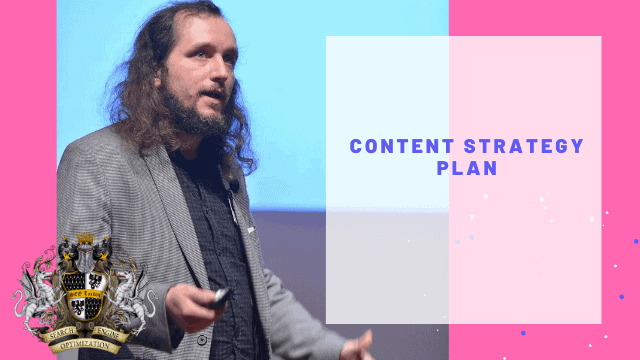什么是 "内容"? 什么是内容策略? 了解为内容支付多少钱 如何用五个步骤规划内容战略 What to ask an SEO Consultant
Do you want to…
Drive traffic to your physical shop or online store?
Increase sales or generate leads?
Build a brand or promote an established brand?
Update your customers on what is going on and what are you planning to do with your business?
Educate customers on what you do?
Attracts people only from your local area or from overseas as well?
After answering all the questions, choose no more than two or three of the above objecting for your blog content strategy. More objective will make your blog unclear and it will not be able to achieve the desired results. Also, be very specific with your goals. Simply stating the objective “increasing sales or getting more traffic” is not enough. Your goal should include how much sales you want to increase and in what timeframe.
For example, A freelance artist has a blog whose primary goal is to build a brand name around his name by educating customers about what he does by showcasing his work, with the secondary goal of increasing sales by 10% in 3 months.
Once you have you’re why it is time to figure out where you want your content to reach. In order to do that, you must go through targeted market research.
Step 2 – Target Market Research
Defining a specific goal is not enough until you have information about your target audience. For that, you must do target market research.
So, how do you do target market research?
To begin with, ask yourself the following questions:
Where does my customer spend most of their time on the internet? – Reading certain blogs, social media platforms like Facebook, Instagram, Twitter or forums, news, etc.
Where and when they read the content most? At Work, At home, Before bed, Early morning, etc.
What sort of content do they most enjoy reading? – Reading informational articles, how-to articles, reviews, and comparison articles, etc (You can use BuzzSumo to see what your competitor’s most shared articles are.)
Above questions will help companies to know about their customer’s demographics (i.e. who they are, where they live, how old they are, etc.) But the important thing they do not know is about their psychographics (i.e. why they buy).
Looking for help with your SEO?
My name is Łukasz Żelezny, I am the founder of SEO.London. I have worked in the industry for the last 20 years. As an SEO consultant, I have helped dozens of companies. Would you like to improve your SEO results? Let’s discuss the matter on a video call.
Get Started
According to Brad Smith, the content expert behind Codeless, to date, the successful blog posts follow the old PAS (Problem Agitate Solution) copywriting principle. Such articles begin by introducing the root problem the readers are facing, then they dig into the symptoms, and try to target readers’ pain points. Finally, the provide a solution by offering an idea, a product, or service or anything else.
Using PAS principal effectively for creating blog content, you need to understand three things.
What your readers are trying to achieve.
What is stopping them from doing it?
What will happen to them if they do not achieve it?
You can find answers to these questions by conducting surveys, interviews, etc.
Once you have all the information, you will be able to create blog content that will do a lot more than just increasing your social shares.
Step 3 – Keyword Research and Topic Ideas
After defining your goals and conducting target market research, the next question that comes up is: How do we know which topics and phrases to create content around?
The answer is Keyword Research.
Keywords are the base of an effective blog content strategy. Without them, it will be extremely challenging for you to rank your page well on the search engines. So, before we do anything else, we should figure out which keywords and questions/phrases interest our target audience.
Keyword research is not all difficult. It can be done in four simple steps-
Start by finding some keywords that are relevant to your niches. The keyword you want to rank for should have high search volume and low competition. There are various tools that you can use for keyword research like Google Keyword Planner, SEMrush, Ubersuggest, etc.
The next step is to narrow down the list of keywords by filtering out the topics that have business value and traffic potential.
Write informative and great quality content that includes your main keyword in the title, body, header, also image alt text. Although you do not want to overdo it, depending on the length of the article, 3-7 times is enough.
Now, work on getting backlinks to that article with your main keyword as the anchor text. But you have to be careful not to overdo this either.
There are other parameters and complications like page load speed, number of shares the article received, time spent, etc. that can affect your ranking on search engines. Also, you do not need to base all the article topics on keyword research. SEO should not control your content strategy. It should factor the topics and message of your content. If you may not find an opportunity for a specific keyword, it should not stop you from sharing your knowledge and information with your target market. The generic keyword with Best Possible Content will also help you to rank higher in search engines.
Step 4 – Build Amazing Content
Now, you have got your keywords and you have narrowed down a list of high potential topics to create content around. Now it is time for you to build your own content. While building content, it is all about finding the balance between quality and speed of content production. An amazing piece of content needs to be built not just written.
Content should be well-written without any spelling and grammar mistakes. You should try to avoid the use of any complex language and terminology until necessary.
Try to include stats, case studies, examples that show you have done proper research.
If your content includes images, make sure to use high quality and relevant images only. You can find free high-quality images form MyStock.Photos or even make your own using tools like Canva and others.
Content should be Formatted for skimming which means it should include headings, subheadings, bulleted lists, blockquotes, bolding, and italics.
Step 5 – Promote Your Content
If nobody sees your content, then nobody will become your customer. Hence, in the final step, Promotion is an important part of content strategy. There are many ways in which you can do that. Few ways are-
Paid Ads- If you already know who your target audience is, paid ads are the fastest way to get your content in front of the audience. You can run paid ads on Facebook, Google, Twitter, Pinterest, Bing, etc. The best part of paid ads is trackable results. You can track impressions, link clicks, and even conversions with the help of these ads. In the beginning, you can start ads with very little budget. After tracking and analyzing the results you can further increase or decrease your budget.
Email List- Email marketing is the oldest and most effective way to promote content. Every time you create and post new content, you can inform your subscribers by sending an email and encouraging them to click on the link. If you already don’t have an email list of subscribers, you can use paid ads to generate leads.
Repurposing- Sharing the link and title of your content through forums and social media is not the only way to promote your content. There are tons of other ways to promote your content. You can promote your content by sharing the snippets of data, by creating infographics and sharing them on social media or by sharing “how-to” tutorials.
Search Engine Optimization- SEO is the best form of content promotion method. With SEO optimized content, you do not have to promote your content to your customers-they will naturally find your content in search results. These people are already interested in the topic and will understand your business value. Hence, SEO is the best long-term strategy since you get leads passively with every new content you will publish.
Do you need support with your content strategy?
Your online web content strategy is extremely important to your SEO ranking and position on search results for certain keywords, and having a strong, positive content strategy can bring you leads and prospects, build your website’s traffic, and significantly improve your company’s reputation.
Blog content is a fantastic way to rank super well for certain keywords. By using SEO optimization in your blog articles, you can push your web pages up the search engine results positions, and make your website and thereby your services way more visible to potential customers! Writing helpful, engaging and well-structured blog content is the number 1 way to hit on the right keywords and earn the favour of Google’s cryptic and mysterious algorithm.
Improving your content strategy and getting support with making it better should always be a target for you – a routine even. You can never have the perfect content strategy, especially nowadays when the algorithm is endlessly changing and the business landscape shifts and changes constantly. Content strategy is quickly becoming a hugely important part of a modern company’s marketing plan, and you should not hesitate in getting support with it. Our experts can help you plan out the best content strategy and rank well for keywords in search engines. We have extensive experience in this field and we can build an excellent content strategy which will propel your business to new heights, and increase your visibility to new, top ticket customers and clients.
Conclusion
很难给 内容 尤其是大家都同意的那一个 搜索引擎优化 专家和内容战略家。虽然困难重重,但一些 顶部 级别 来自世界各地的营销人员为我们提供了内容的定义,给我们一个坚实的起点。
内容是高质量的信息,它能给消费它的人带来娱乐、启迪、教导或提供解决方案。内容可以是音频的形式。 视频 ,文字。 图像 和/或演示。这些内容可以是为你的网站 着陆页 , 博客 帖子、演讲、营销活动等。
Lukasz Zelezny 是一位拥有 20 多年经验的搜索引擎优化顾问,他将帮助您提升在线形象。 对于营销活动的成功,内容的质量是极其重要的。上发现的内容 互联网 并不总是有好的质量,它没有为目标受众提供任何类型的相关性或有用性。
因此,建立一个内容 战略 是成功运行营销活动的重要和必要条件。在这篇文章中,我们将回答与博客有关的所有问题。 内容战略 喜欢 什么 内容战略是什么,如何创建一个内容战略计划,如何使用内容,等等。
内容战略指的是规划、开发。 管理 内容的传播。简单地说,内容战略意味着在正确的时间和地点,将正确的内容提供给正确的受众。
它是一套规则和准则,负责满足 业务 通过内容创作来实现目标和要求。您的内容战略要解决以下问题 目标 无论是让您的企业更容易接近,还是让您的企业与竞争对手区别开来。它还能创建一致的信息和风格,使不同团队创建的内容传达相同的信息。虽然创建的内容可能因平台而异,但目的都是一样的。
规划一个内容战略对于在网络世界中实现预期的结果是很重要和必要的。它并不像听起来那样苛刻。你一天中的几个小时就足以想出一个写好的内容战略计划。在这里,我们将 指南 你如何在五个步骤中规划一个内容战略。那么,让我们开始吧。
"我们应该创造什么,以及,为什么?"
确定你的目标是上述问题的答案。你的目标就是你的 "WHY"。有了一个明确的目标,将有助于你突破所有其他步骤和所有必然出现的障碍。
现在,下一个问题是你将如何定义你的原因?回答以下问题。
你是否想...
为你的实体店或网店带来流量? 增加销售或 产生线索 ? 建立一个品牌或推广一个已有的品牌? 向你的客户介绍最新情况,以及你的业务计划是什么? 教育客户了解你的工作? 只吸引本地人,还是也吸引海外人士? 在回答完所有问题后,为你的博客内容策略选择不超过两到三个以上的目标。更多的目标会使你的博客变得不明确,也无法达到预期的效果。此外,你的目标要非常具体。仅仅陈述 "增加销售或获得更多流量 "的目标是不够的。你的目标应该包括你想增加多少销售额,以及在什么时间范围内。
例如,一个自由艺术家有一个博客,其主要目标是通过展示他的作品,让客户了解他的工作,从而围绕他的名字建立一个品牌,次要目标是在3个月内增加10%的销售额。
Once you have you’re why it is time to figure out where you want your content to reach. In order to do that, you must go through targeted market research.
第2步 - 目标市场研究 只有掌握了目标受众的信息,才能确定具体的目标。为此,您必须对目标市场 研究 .
那么,你如何进行目标市场研究?
首先是。 问 请回答以下问题:
我的客户在互联网上的大部分时间都花在哪里? – Reading certain blogs, social media platforms like 脸书 Instagram、Twitter 或论坛、新闻等。他们在哪里和什么时候阅读的内容最多?在工作中,在家里,睡前,清晨,等等。 他们最喜欢阅读什么样的内容?- 阅读信息类 文章 以及如何操作的文章、 评论 ,以及对比文章等。 (你可以用 BuzzSumo 来看看你的竞争对手分享最多的文章是什么)。 以上问题有助于 公司 了解客户的人口统计数据(即他们是谁,住在哪里,如何 老 他们是,等等)但他们不知道的重要事情是关于他们的心理特征(即他们为什么购买)。
根据布拉德-史密斯(Brad Smith)的说法,他是一名内容专家。 无代码 谈到 日期 ,成功的博客文章遵循古老的PAS(问题激化解决方案)。 文案写作 原则。这类文章首先介绍读者面临的根本问题,然后挖掘问题的症结所在,并努力针对读者的痛点。最后,通过提供 想法 产品、服务或其他任何东西。
有效地利用PAS原则来创建博客内容,你需要了解三件事。
你的读者想要达到什么目的。 是什么阻止了他们的行动? 如果他们没有实现,他们会发生什么? 你可以通过进行调查、采访等方式找到这些问题的答案。
一旦你掌握了所有的信息,你将能够创建博客内容,而不仅仅是增加你的社交分享。
第3步 - 关键字研究和主题创意 在确定目标并进行目标市场调研之后,下一个问题就来了:我们如何知道 其中 围绕哪些主题和短语创建内容?
答案是 关键词 研究。
关键词是一个有效的博客内容策略的基础。没有它们,你的网页要想在搜索引擎上获得好的排名将是非常具有挑战性的。 搜索 引擎。因此,在做其他事情之前,我们应该弄清楚哪些关键词和问题/短语是我们的目标受众感兴趣的。
关键字研究 并不难。只需四个简单步骤即可完成
首先要找到一些与你的利基市场相关的关键词。你想获得排名的关键词应该具有高 搜索量 和低 竞争 .您可以使用多种工具进行关键词研究,例如 谷歌关键词规划器。 淘宝网 , Ubersuggest ,等等。 下一步是通过筛选出具有商业价值和流量潜力的主题来缩小关键词的清单。 撰写信息量大、质量高的内容,其中包括你的主要关键词。 职称 ,主体,标题,还有图像 备选 文字。虽然你不想过度,但根据文章的长度,3-7次就足够了。 现在,努力获得该文章的反向链接,将你的主要关键词作为 锚文本 .但你也要注意不要做得太过分。 还有其他参数和复杂情况,如页面加载速度、文章收到的分享数量、花费的时间等,都会影响你在搜索引擎上的排名。另外,你不需要把所有的文章主题都建立在关键词研究上。SEO不应该控制你的内容策略。它应该是你的内容的主题和信息的因素。如果你可能没有找到一个特定关键词的机会,它不应该阻止你分享你的 知识 和信息与你的目标市场。通用关键词与最佳可能的内容也将帮助你在搜索引擎中获得更高的排名。
第4步 - 建立惊人的内容 现在,你已经得到了你的关键词,你已经缩小了一个高潜力主题的列表,以创建内容。现在是时候让你建立自己的内容了。在建立内容时,关键是要找到内容生产的质量和速度之间的平衡。一个惊人的内容需要建立,而不仅仅是写。
内容应该写得很好,没有任何拼写和语法问题 错误 .除非有必要,你应尽量避免使用任何复杂的语言和术语。 尽量包括统计数字、案例研究、表明你已经做了适当研究的例子。 如果你的内容包括图片,确保只使用高质量和相关的图片。你可以找到 免费的 高质量的图像形式 MyStock.Photos 或甚至使用Canva等工具制作你自己的。 内容应该是适合浏览的格式,这意味着它应该包括标题、副标题、圆括号列表、分块引用、加粗和斜体。 第5步 - 推广你的内容
如果没有人看到你的内容,那么就不会有人成为你的客户。因此,在最后一步 促销活动 是内容战略的重要组成部分。有很多方法可以做到这一点。几种方法是
付费广告--如果你已经知道你的目标受众是谁,付费广告是将你的内容呈现在受众面前的最快方式。你可以在Facebook、谷歌、Twitter、Pinterest上运行付费广告。 宾 ,等等。付费广告的最好部分是可追踪的结果。你可以 追踪 在这些广告的帮助下,印象、链接点击,甚至转化率。在开始时,你可以用非常少的钱开始做广告 预算 .跟踪和分析结果后,您可以进一步 增加 或减少预算。 电子邮件 列表--电子邮件营销是推广内容的最古老和最有效的方式。每次你创建和发布新内容时,你可以通过发送电子邮件通知你的用户,并鼓励他们点击链接。如果你已经没有一个用户的电子邮件列表,你可以使用付费广告来产生线索。再利用--通过论坛和社交媒体分享你的内容的链接和标题,并不是推广你的内容的唯一方法。有大量的其他方法来推广你的内容。你可以通过分享数据片段、创建信息图表并在社交媒体上分享或分享 "如何做 "的教程来推广你的内容。 搜索引擎优化-SEO是内容推广方法的最佳形式。有了SEO优化的内容,你不必向你的客户推广你的内容-他们会在搜索结果中自然地找到你的内容。这些人已经对该主题感兴趣,并会了解你的商业价值。因此,搜索引擎优化是最好的长期战略,因为你每发布一个新的内容就会被动地获得线索。 你在内容战略方面需要支持吗? 你的在线网络内容策略对你的SEO排名和某些关键词在搜索结果中的位置极为重要,拥有一个强大的、积极的内容策略可以为你带来线索和前景,建立你的网站流量,并显著提高你公司的声誉。
博客内容是在某些关键词上获得超级好的排名的绝佳方式。通过在你的博客文章中使用SEO优化,你可以把你的网页推到搜索引擎结果的位置,并使你的网站,从而使你的服务对潜在客户更加明显 写作 有帮助的 吸引人和结构良好的博客内容是击中正确的关键词并赢得谷歌神秘算法青睐的首要途径。
改善你的内容策略并获得支持使其变得更好,应该始终是你的一个目标--甚至是一个常规。你永远不可能拥有完美的内容策略,尤其是在算法无休止地变化和商业格局不断转变的今天。内容战略正迅速成为现代公司营销计划的一个极其重要的部分,你应该毫不犹豫地获得这方面的支持。我们的专家可以帮助你规划出最佳的内容策略,并在搜索引擎中获得良好的关键词排名。我们有广泛的 经验 在这个领域,我们可以建立一个优秀的内容战略,这将推动你的业务达到新的高度,并增加你的知名度,让新的顶级客户和 客户 .
总结 当涉及到 内容营销 许多人不知道从哪里开始。他们的注意力只集中在 "内容创作 "上。虽然开始发布你的博客文章可能很诱人,因为他们想到了,但有一个书面的博客内容战略将节省你的时间,并将显示更多的结果。
只需要几个小时就可以把博客内容战略放在一起。考虑一下内容策略,相当于磨刀霍霍的斧头。斧头越锋利,砍树的机会就越大。同样,如果你有一个书面的内容战略,你将有更好的成功机会。
如果你有任何关于为你的企业、博客或网站制定内容战略的问题,请随时给我们写信,lukasz@zelezny.co.uk,或在我们的社交媒体上与我们联系。

